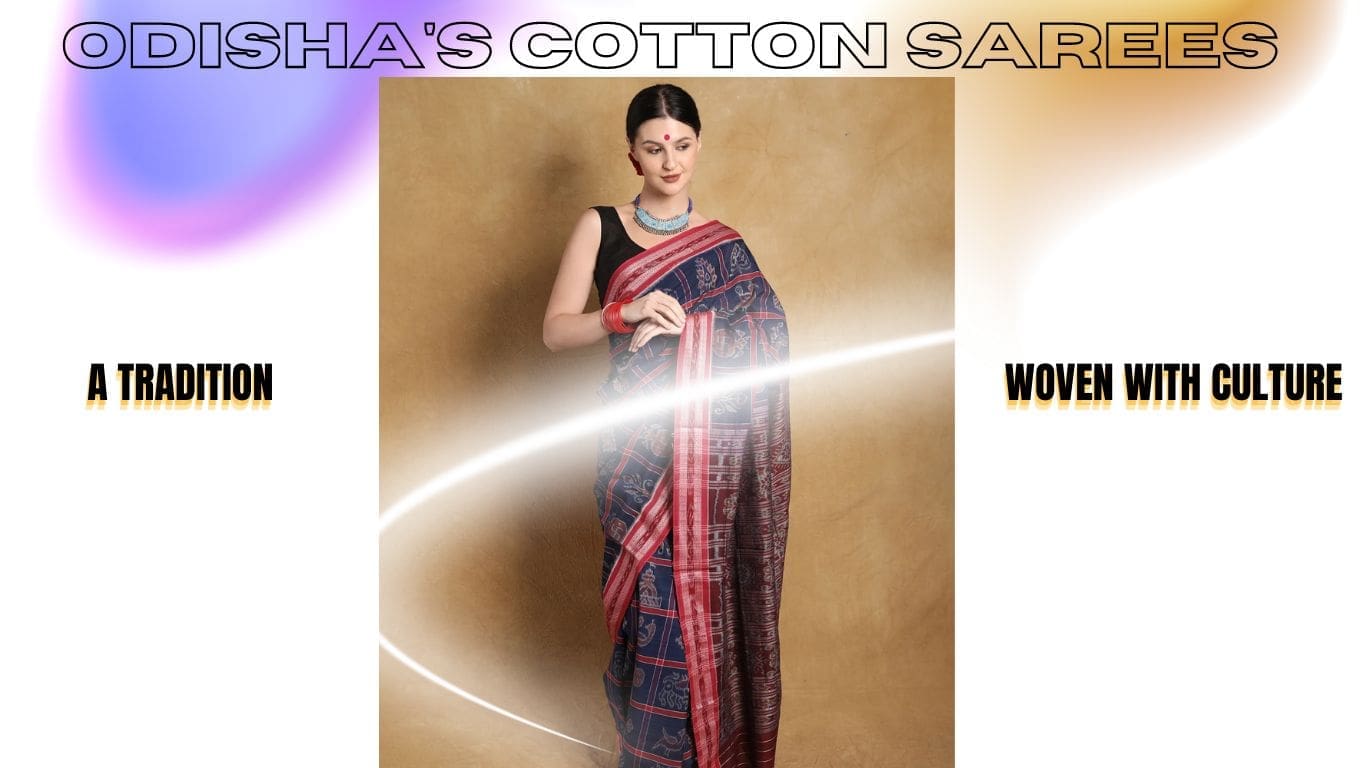Odisha’s handloom cotton sarees are a captivating blend of earthy elegance and rich cultural heritage. Draped in shades of cream, maroon, brown, and rust, these sarees are a visual delight, captivating not just within the state but also in major Indian cities like Delhi, Mumbai, Kolkata, and Chennai.
A Legacy Woven with Faith
The influence of Jagannath culture is deeply woven into the fabric of these sarees. Traditionally, the four prominent colors associated with Jagannath – red, black, white, and yellow – were prominently used. The motifs themselves echo this devotion, with temple borders, lotus blooms, conch shells, and animal figures paying homage to the state’s revered deity.
Embracing Change, Preserving Tradition
While the essence of Odisha’s cotton sarees remains rooted in tradition, the weaving techniques have adapted to modern preferences. Natural vegetable dyes, once the norm, have been supplemented by more affordable chemical dyes. However, the allure of natural dyes persists, adding a premium touch for those who seek it. New color palettes and patterns have also been incorporated, ensuring these sarees remain relevant in contemporary fashion.
A Tapestry of Skill and Technique
Odisha boasts a rich legacy in handloom weaving, particularly Ikat and tie-dye techniques. These sarees are renowned for their captivating designs, harmonious color combinations, and exceptional durability. Skilled artisans across the state continue to preserve this time-honored tradition, ensuring each saree is a testament to their artistry.
A Spectrum of Choices for Every Woman
Traditionally, Odia women favored deep, vibrant colors like blue, red, and magenta, often featuring the distinctive Ikat patterns. These sarees continue to be crafted in Cuttack, the coastal plains, and weaving hubs around Sambalpur, Bargarh, and Sonepur. The recent diversification has led to the rise of new production centers and popularized varieties like Bomkai, Adaspur, Berhampur, and Jagdishpur sarees, offering a wider spectrum of choices for the modern woman.
Enduring Charm and Exquisite Detail
The sarees from Sambalpur and Cuttack hold a special place in the hearts of many. The intricate motifs painstakingly woven in earthy tones create a unique character for each piece. Cuttack sarees are particularly sought-after outside Odisha, especially in West Bengal. Sambalpur, on the other hand, reigns supreme in the realm of Ikat mastery. For those seeking a more budget-friendly option, Khandua patta from Cuttack offers a beautiful alternative.
A Fashion Statement Beyond Borders
These cotton handloom sarees have transcended geographical boundaries, becoming a coveted fashion statement among high society women. Wives of senior politicians and bureaucrats are often seen adorning these elegant drapes. Their popularity extends beyond India, captivating educated women around the world who appreciate the unique blend of tradition and style.
Versatility for Every Occasion
The beauty of these sarees lies in their versatility. They can be effortlessly transitioned from social gatherings and shopping trips to office work and even teaching positions. The stunning color combinations in red, yellow, magenta, and white add a touch of sophistication to any occasion.
From Tea Parties to Summer Comfort
These sarees can also be dressed up for tea parties or dinners, with their borders and motifs adding a touch of decorative flair. While their high demand can make them slightly harder to find, educated urban women can seek them out at Odisha Emporium and other government emporiums. Despite the slightly thicker handloom fabric, these sarees surprisingly offer remarkable comfort during the peak summer months, effectively absorbing sweat and keeping the wearer cool.
A Legacy Woven into Fashion
Loved by educated urban women across India and the globe, Odisha’s cotton handloom sarees have carved a niche for themselves in the world of Indian textiles. They are a testament to the state’s rich cultural heritage, the skill of its weavers, and the enduring appeal of tradition seamlessly blended with modern aesthetics.

